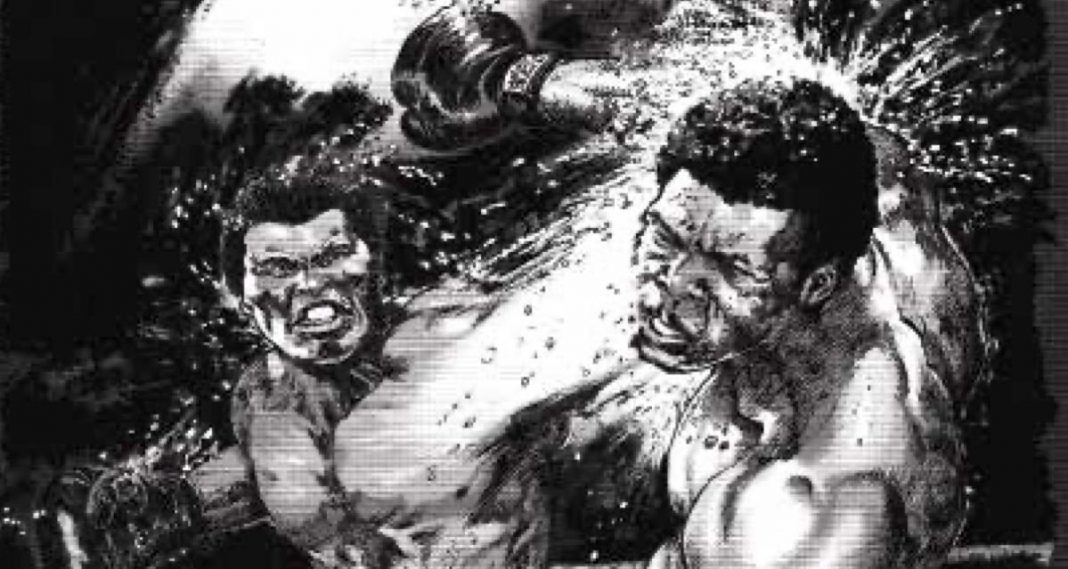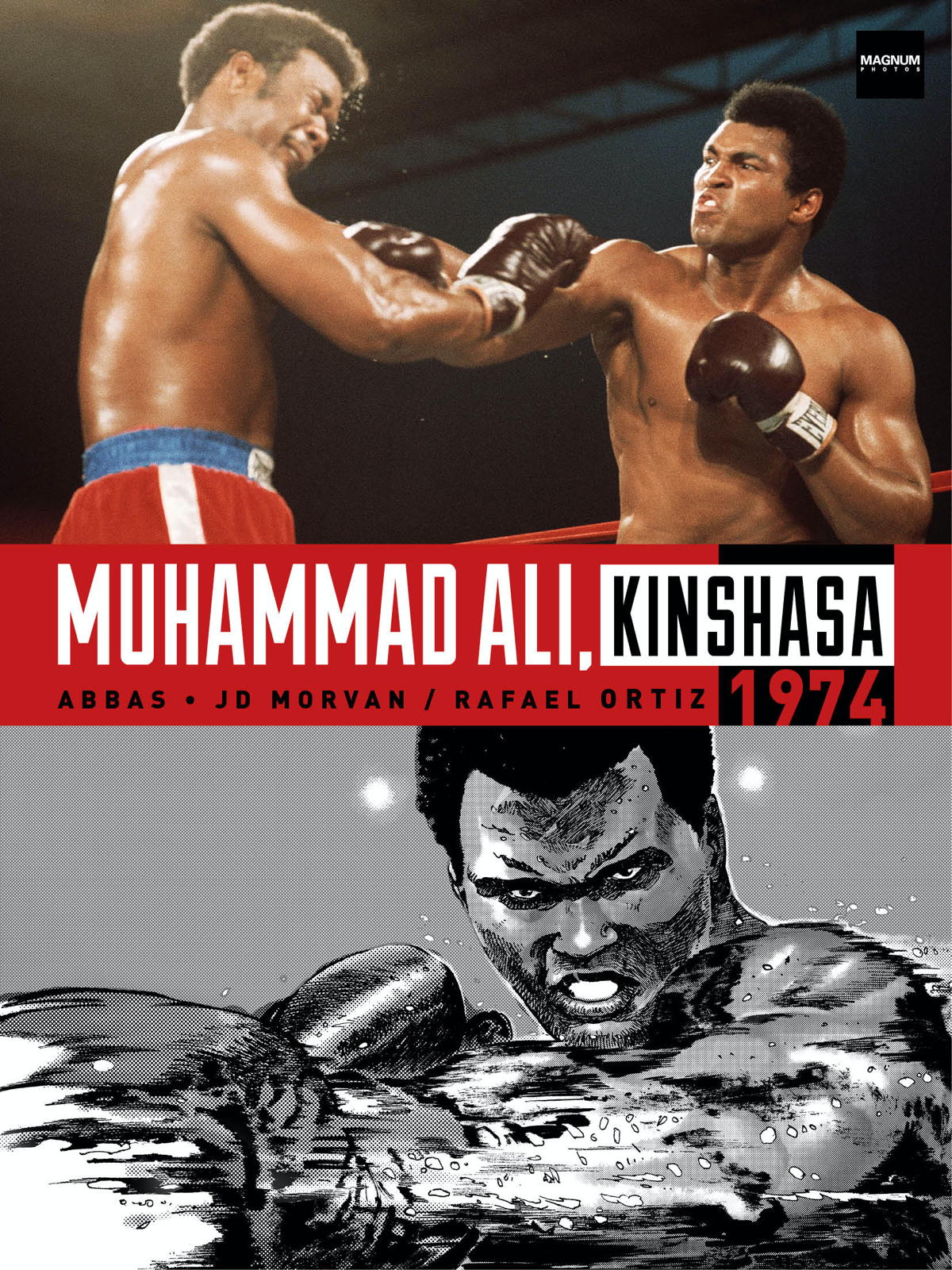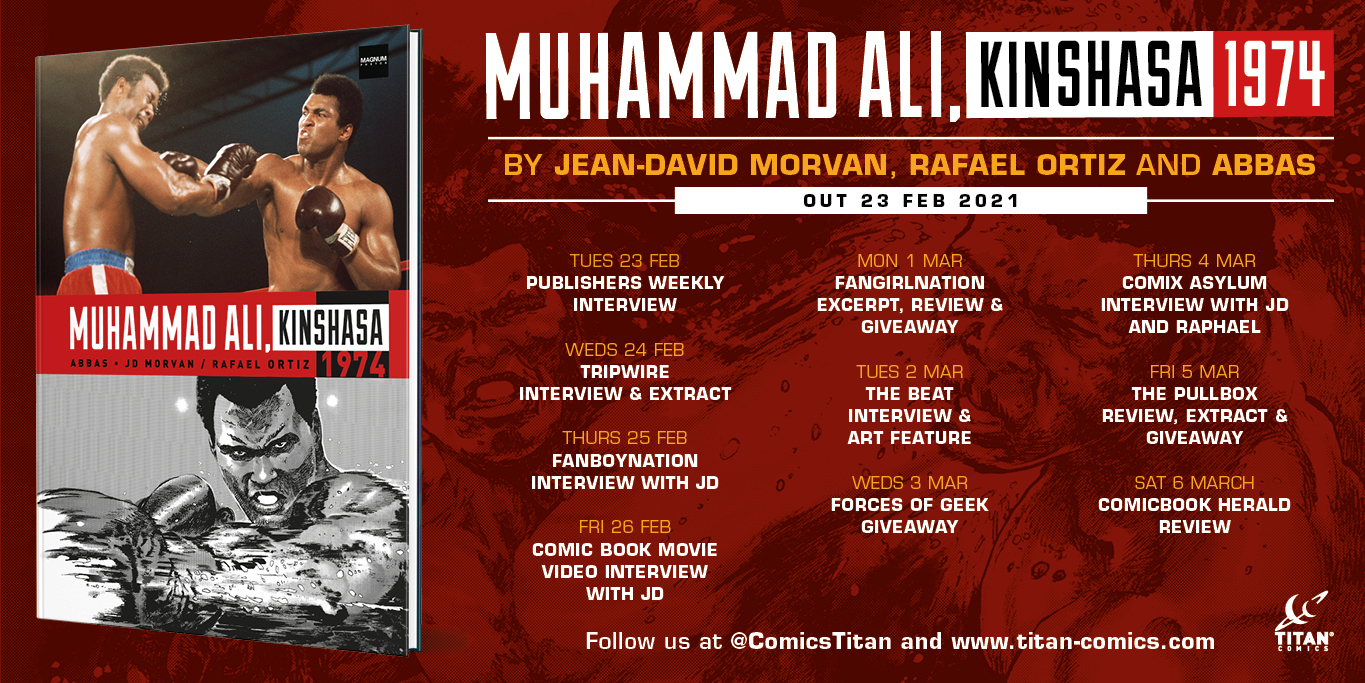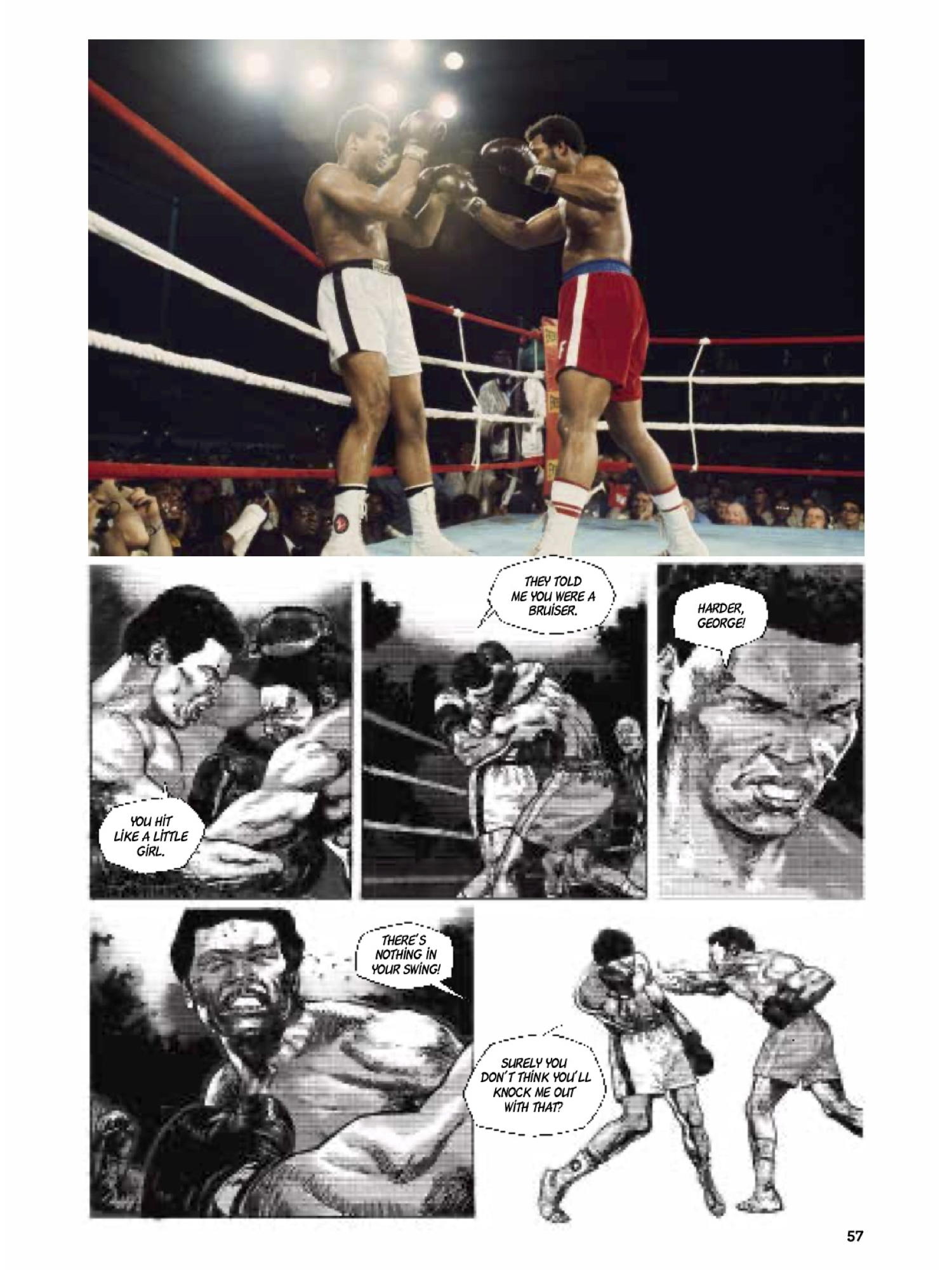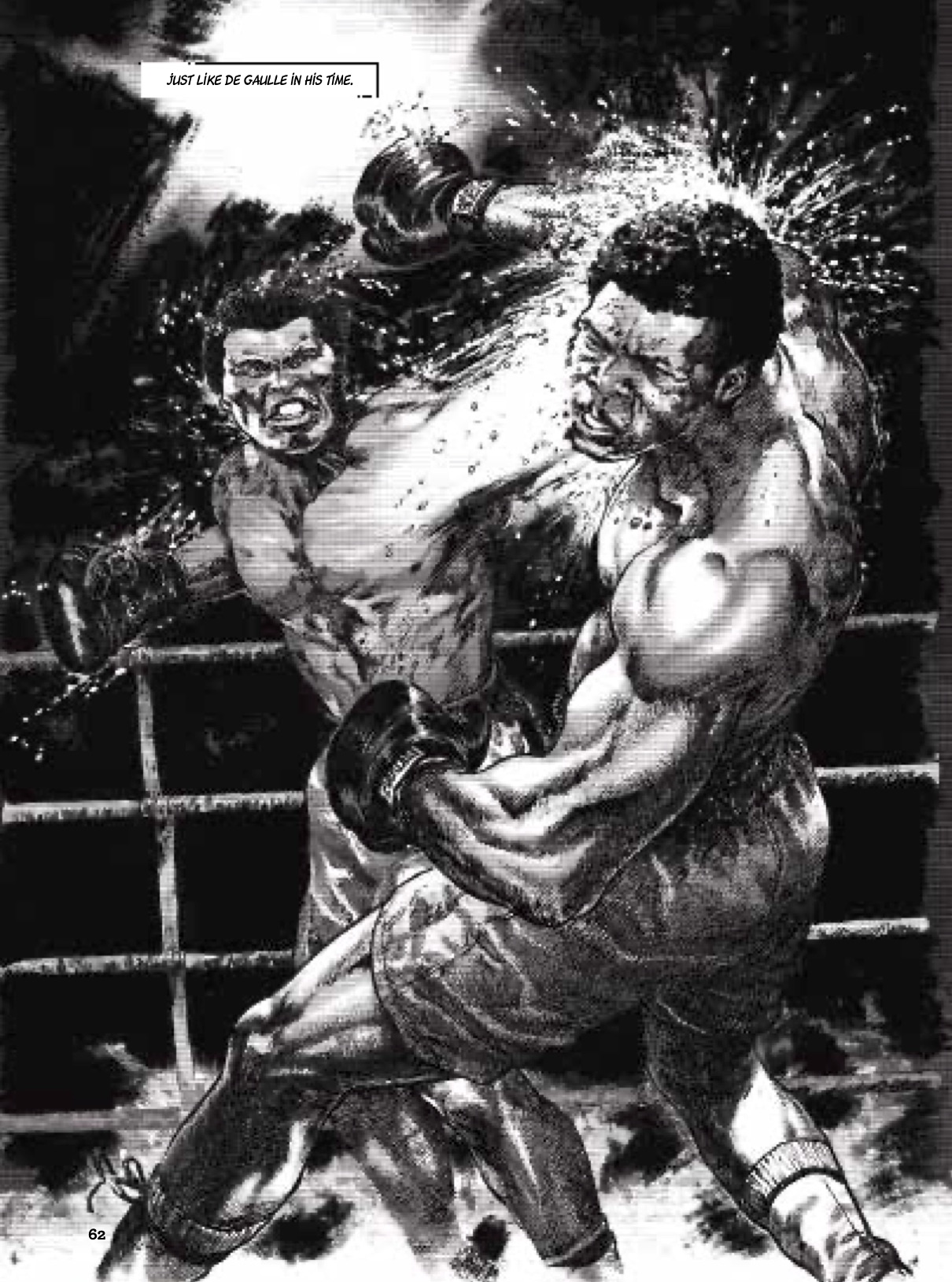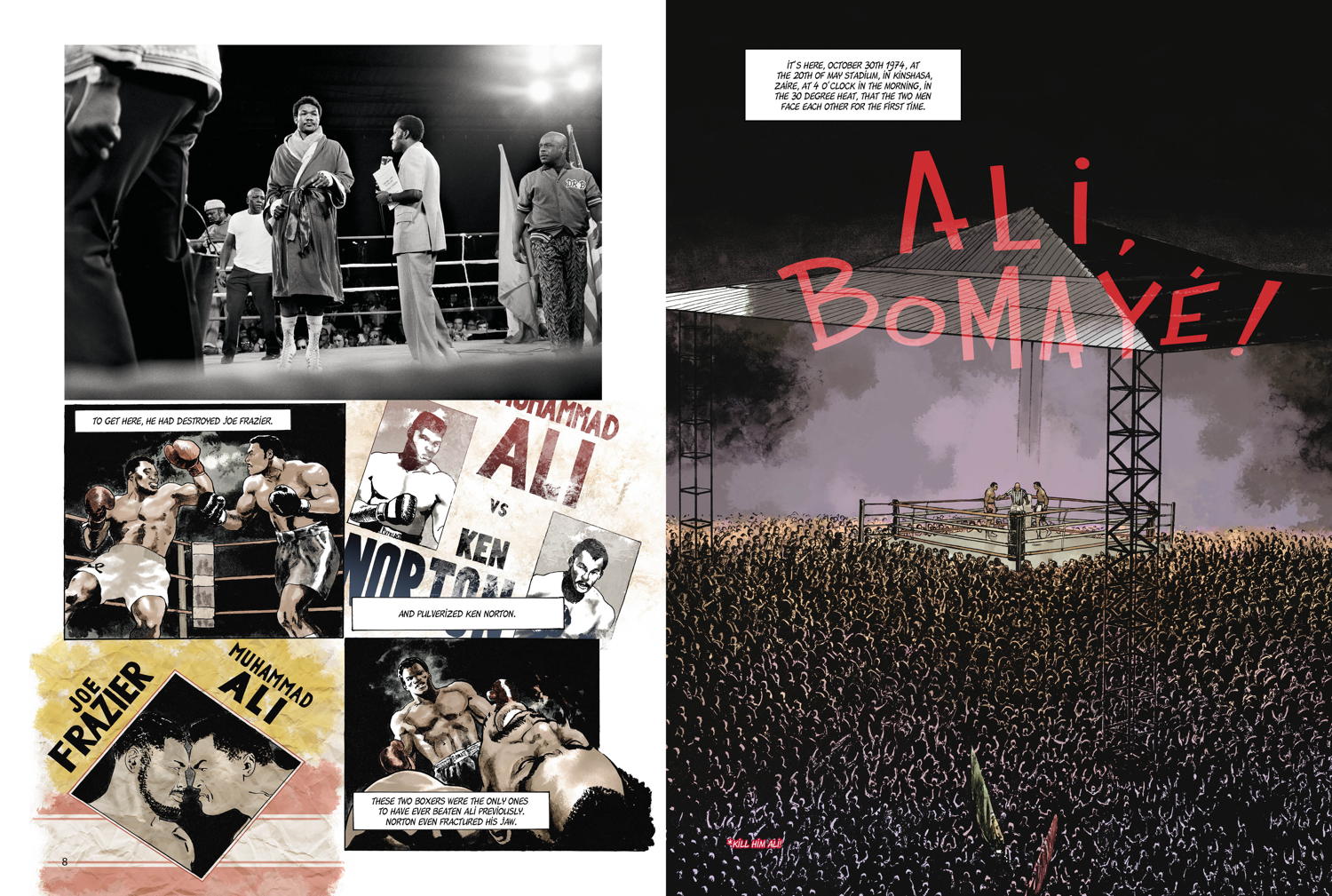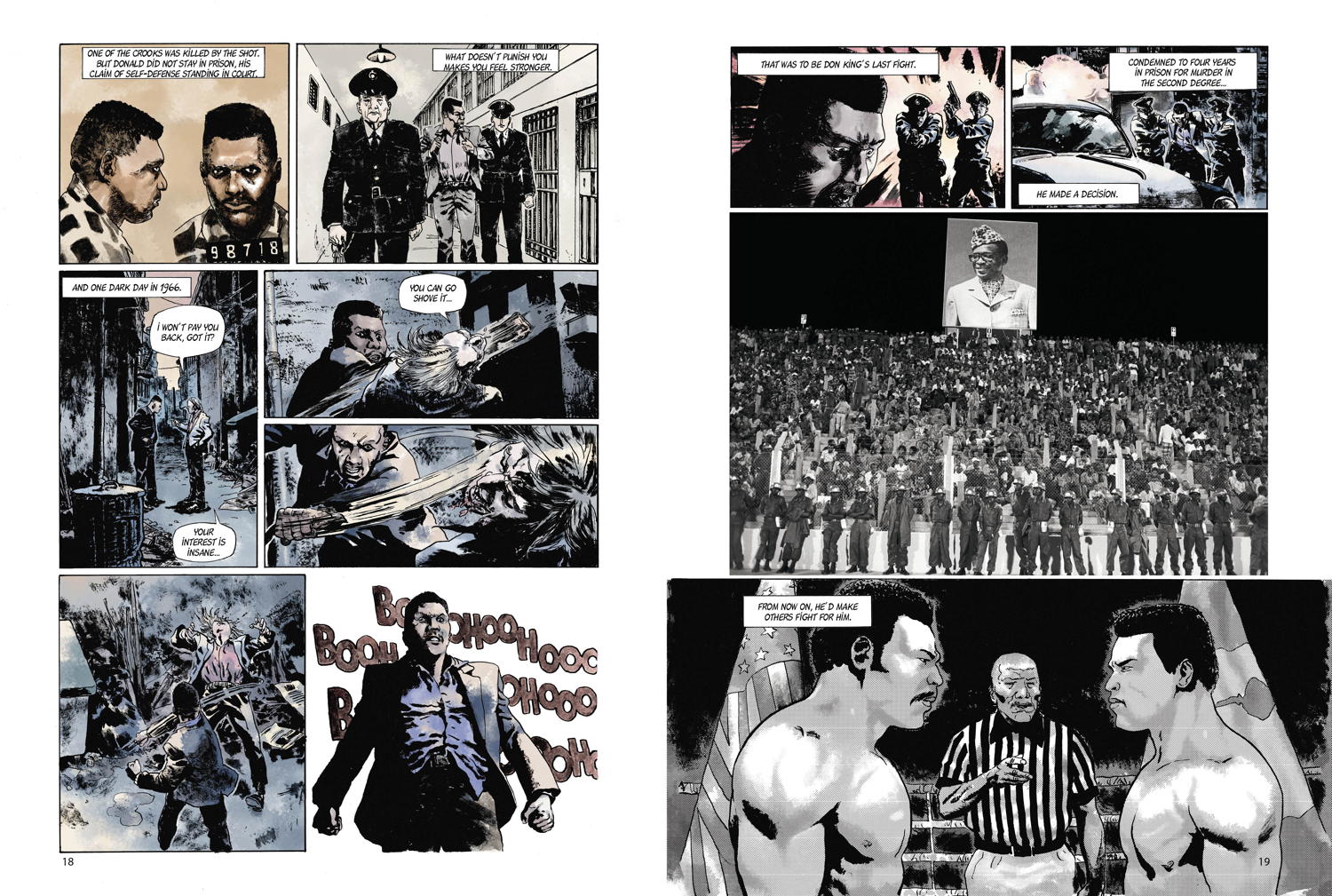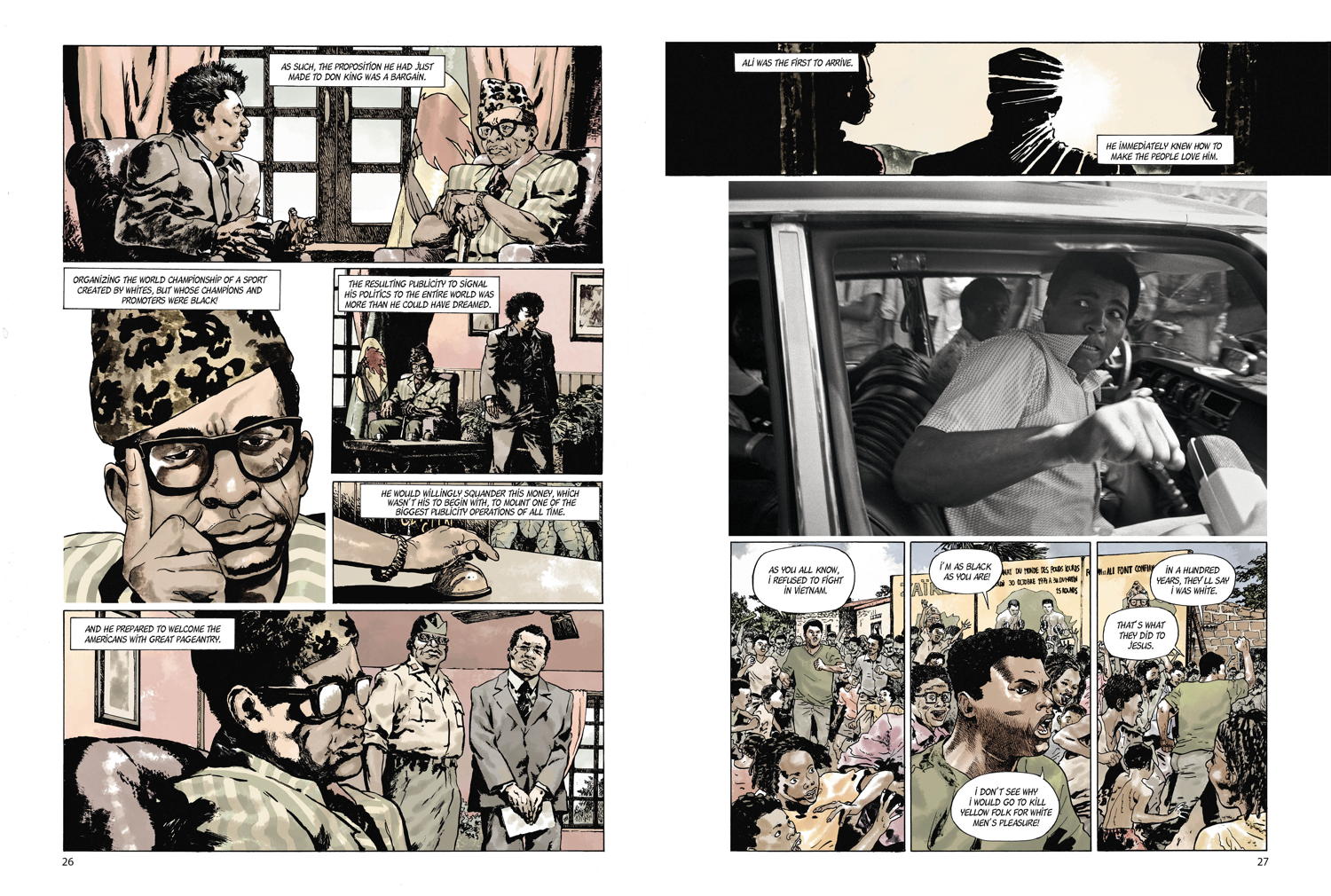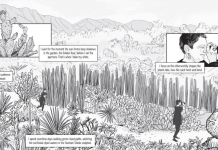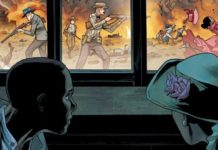
Famed Iranian photographer Abbas was in Zaire to capture the civil unrest, but ended up taking many iconic shots of the fight. Now the fight, Abbas’s photos and the drama surrounding the event has been captured in Muhammad Ali: Kinshasa 1974. This mixed-media graphic novel takes the photos and adds a story by French comics superstar JD Morvan and artist Rafael Ortiz. Published in English by Titan Comics, the graphic novel includes new backstory from Abbas and the comics part adds the social context of the unforgettable fight.
The Beat has joined in a blog tour for the book, which was published on February 23rd. Along with preview pages, we’re happy to provide an interview with writer JD Morvan, known in France for his many fantasy bestsellers and historical graphic novels, available in English from Europe Comics, Magnetic Press and now Titan Comics. I’ve interviewed him several times before and was delighted to get another chance to talk with him
This interview was conducted via email and translated from the French original with some editing by me for flow and clarity.
THE BEAT: ‘Muhammad Ali: Kinshasa 1974’ is such a beautiful book with so many powerful angles – from the photos to the art to Ali himself.
JD MORVAN: Thank you ! Yes, Abbas’s photos of this fight, and in general, are really powerful. It was a pleasure to work with his material. And an honor!
THE BEAT: I know this project began as part of something you put together with the photo agency Magnum. Can you describe what the goal of that project was?
MORVAN: A photo reveals an instant, 1/100 or even 1/1000 of a second. Comic strips are the opposite. It’s the ability to tell a long story with drawings on one side, and between each panel, white space that allows readers to make their own mental film. One evening I thought that it would be interesting to write about the lives of photographers because for me, they are really heroes. They take foolish risks to go into dangerous terrain to show us things we wouldn’t want to see but that are important to know.
I was fortunate that Magnum agreed to launch this project with me and I thank them again.
THE BEAT: How did you get involved with Abbas? He was best known for photographing political actions around the world, correct? I understand he was only in Zaire to photograph the political unrest and then shot the fight. The unrest added to the drama, of course.
MORVAN: Yes, Abbas was also a photographer of religions. Of all religions. It’s a subject he was very interested in and worked on a lot. He finally ended up at that boxing match by chance. If Foreman hadn’t had an injury to his eyebrow, the match wouldn’t have been postponed, and Abbas wouldn’t have been able to photograph it. He was in Africa for a completely different reason. But he was able to do it, and so were we!
THE BEAT: The photo/comics hybrid is an unusual format. In this case, the power of Abbas’ images is so great, what do comics add to it?
MORVAN: As I mentioned above, we can tell everything that is around the instant captured in a photo. We contextualize the world situation, we tell the lives of the characters, in a way, we make everything converge towards that precise moment when the photographer presses the shutter release.
It’s true that a photograph is sometimes just as powerful if you don’t know the context. But for us, it seemed interesting to tell the whole story. As much for Abbas as for the Normandie landing photographed by Robert Capa, the end of World War II by Henri Cartier Bresson, September 11 by Steve McCurry, or the Chechen War by Stanley Greene. They are also ways to give readers a particular, personal and documented view of the events they have inevitably heard about.
THE BEAT: How did artist Raphael Ortiz get involved with the project?
MORVAN: He was not the first artist to work on the project, but the power of his action scenes brought a lot of strength to the comic. And that’s important, because it was really a heavyweight match. It had to be felt in the graphic novel.
THE BEAT: How did you approach this hybrid as a writer?
MORVAN: First by interviewing Abbas. Then by reading a lot of books and watching a lot of documentaries on the fight, including the fight itself without commentary. I obviously read history books to be completely clear with the situation of the time and to present its complexity to readers in a simple way. I always tell myself that it’s my job as a screenwriter to tell complex things in a natural way.
THE BEAT: Was that the main attraction of the story to you? That might be an obvious question since Ali was such a transformative figure of the 20th century, and his story is full of dramatic incidents!
MORVAN: What I was really interested in was showing how you achieve your goals. First Abbas, of course, who as an Iranian was not really predestined to do photography but who did it because he wanted to. And then of course Ali, who, knowing that he would have a hard time facing Foreman’s iron fists, tried to come up with a strategy. But he came up a winner. It’s also, in a way, about the importance of the brain in sports. It’s not just biceps that make you win.
THE BEAT: You’re a very well-known comics writer in France, but your work is increasingly seen in English. How has that impacted your career and the kind of projects you work on?
MORVAN: It is thanks to my French publishers who manage to sell my books abroad. But also to the foreign publishers who accept to publish them. I thank them! I don’t pay too much attention to the future of my books, rather, I try to totally immerse myself in their present. What matters to me is to be totally immersed in a story when I write it. I always try to put myself in the reader’s shoes to find out how they will feel, whether I need to speed up the pace so that they don’t get bored, when I need to explain the historical situation more precisely, how to make a character understand a certain reaction, etc. After that, all that happens is a bonus. And frankly it’s a pleasure. I had the chance, a few years ago, to write a story about Wolverine (Saudade), so my fantasy as a young Frenchman to write superheroes was realized. But if by chance, while reading my translated comics, some American publishers wanted to make proposals, I hope you’ll give them my e-mail address. (laughter)
THE BEAT: Finally what do you think the story of Ali vs Foreman has to say to the world today?
MORVAN: I believe that everyone can see what they want, and that is the power of the great myths. And this fight is a modern myth. For me, what I see in it clearly now is the realization that the world has not always been as it is today. That if today we judge that there have been mistakes, [we see] they come from somewhere, perhaps from the same place, and that what we find “true” today will itself prove to be a mistake in the future. To understand where we are, it’s not enough to judge, it is very important to know where we come from.


